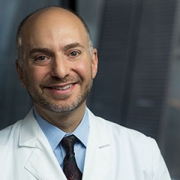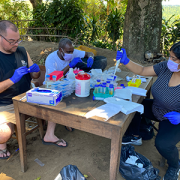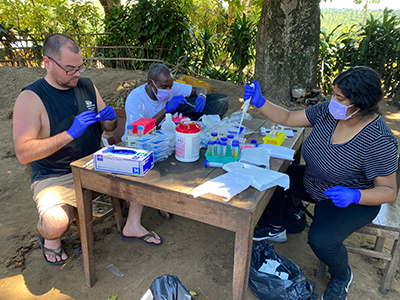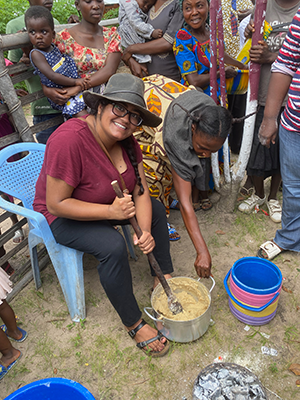Q&A with Dr. Jeffrey Dome on his new role as Continental President of SIOP-North America
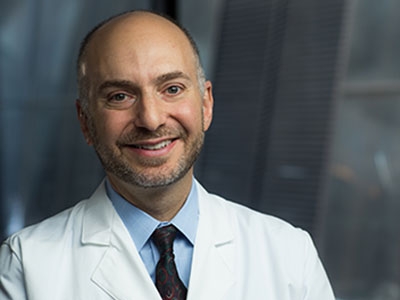
In March 2021, Jeffrey Dome, M.D., Ph.D., senior vice president of the Center for Cancer and Blood Disorders at Children’s National Hospital, was elected as the International Society of Paediatric Oncology’s (SIOP) Continental President of North America.
In March 2021, Jeffrey Dome, M.D., Ph.D., senior vice president of the Center for Cancer and Blood Disorders at Children’s National Hospital, was elected as the International Society of Paediatric Oncology’s (SIOP) Continental President of North America.
On October 21-24, the society will hold its 53rd SIOP Annual Congress virtually. During the congress, Dr. Dome will begin his 3-year term as SIOP continental president of North America and will also chair and speak at an educational symposium on current approaches to the treatment of recurrent Wilms tumor.
Dr. Dome attended his very first SIOP meeting in 2005 and was captivated by how regional context influences pediatric cancer treatment. In 2017, he was chair of the local organizing committee for the 49th annual congress in Washington, D.C., and served on the SIOP Board of Directors. After 15 years of involvement and attending many of the annual meetings, Dr. Dome shares what he looks forward to while serving as continental president of SIOP North America and the legacy he hopes to leave behind.
- What does it mean to you to be elected SIOP continental president of North America?
I’m very excited about this role. There are several important societies and organizations in North America that have made a mark on the field of pediatric oncology, but SIOP is unique in its sole focus on childhood cancer and global approach to improving outcomes, as encapsulated by its vision statement: No child should die of cancer: cure for more, care for all.
- What excites you most about this role?
In an eye-opening statistic, North America has only about 10% of the global burden of childhood cancer and less than 2% of worldwide childhood cancer deaths. Although we relentlessly strive to improve childhood cancer outcomes in the United States, what we experience here is just the tip of the iceberg of the worldwide problem. SIOP seeks to make a difference on the international level by improving education, research and access to care for children with cancer around the world. And I’m excited to have a platform to lead North American ambassadors to do that.
Even though North America has a relatively small fraction of the overall childhood cancer cases, we are one of the most well-resourced continents. The question is, how can we use our knowledge, technology and resources to help the rest of the world. A big part of this role is to make connections and liaisons to move the needle on improving outcomes.
The other thing we’ve learned from a research standpoint is that pediatric cancers are relatively uncommon and are becoming even rarer through molecular classification, which divides cancers into small genetically defined subgroups. While these advances are tremendously exciting, they require international collaboration to amass a sufficient number of patients to evaluate novel treatment strategies. My vision for SIOP North America is to be a convener of researchers and connect people around the world to facilitate that work.
- What are some of your goals while serving as continental president?
We recently sent a survey to more than 450 SIOP North America members and had a nearly 45% response rate, which I’m told is superb. This speaks to an excellent level of engagement in SIOP’s mission, with many members volunteering to participate in committees related to research, advocacy and global health. The majority of the respondents to the survey were physicians but improving childhood cancer treatment takes a holistic approach. One of my main goals is to increase SIOP North American membership to grow the number of nurses, pharmacists, scientists, psychologists, other behavioral health specialists and clinical research coordinators onboard.
I’d like to also identify two to three very specific projects that will impact pediatric cancer care on a global level. There are different ways to do that. We could improve education in different areas around the world (nursing education that we provide to areas that are lacking nursing support, for example). It could be research education and database education for regions of the world that would like to develop more robust research programs. It can also be medical support and developing medical guidelines for oncologists around the world that are adjusted to different levels of resources that are available.
The other goal would be to enhance supportive care and education for cancer care delivery on the global level.
- Why is this work important for you?
One of my mentors from when I was a junior faculty member advised me that to be a well-rounded oncologist, one must be familiar with how childhood cancer is treated around the world because different regions have different approaches. There is something to be learned from everyone. I took that advice to heart and have tried to look beyond the North American approaches. I think it’s very important to have a global exchange of ideas and serving as continental president of SIOP-North America will enable more to facilitate this dialogue.
- What’s the legacy or impact you hope to leave behind?
SIOP North America has a strong and devoted membership but has largely functioned at the level of the individual members. I hope to bring more structure to the organization to tackle the global challenges of childhood cancer treatment.
Once this structure is in place, I hope to complete two or three SIOP-North America initiatives that have a measurable impact on improving childhood cancer care delivery or outcomes. The specific projects have yet to be defined but will likely be in the categories of enhancing education, supportive care and facilitating research infrastructure. There’s so much to tackle that if you just look at the overall problem of childhood cancer, it’s overwhelming. We’re not going to be able to solve everything in three years, but if we could have a few victories and be able to move the needle in some areas, I think that would be a huge success.


